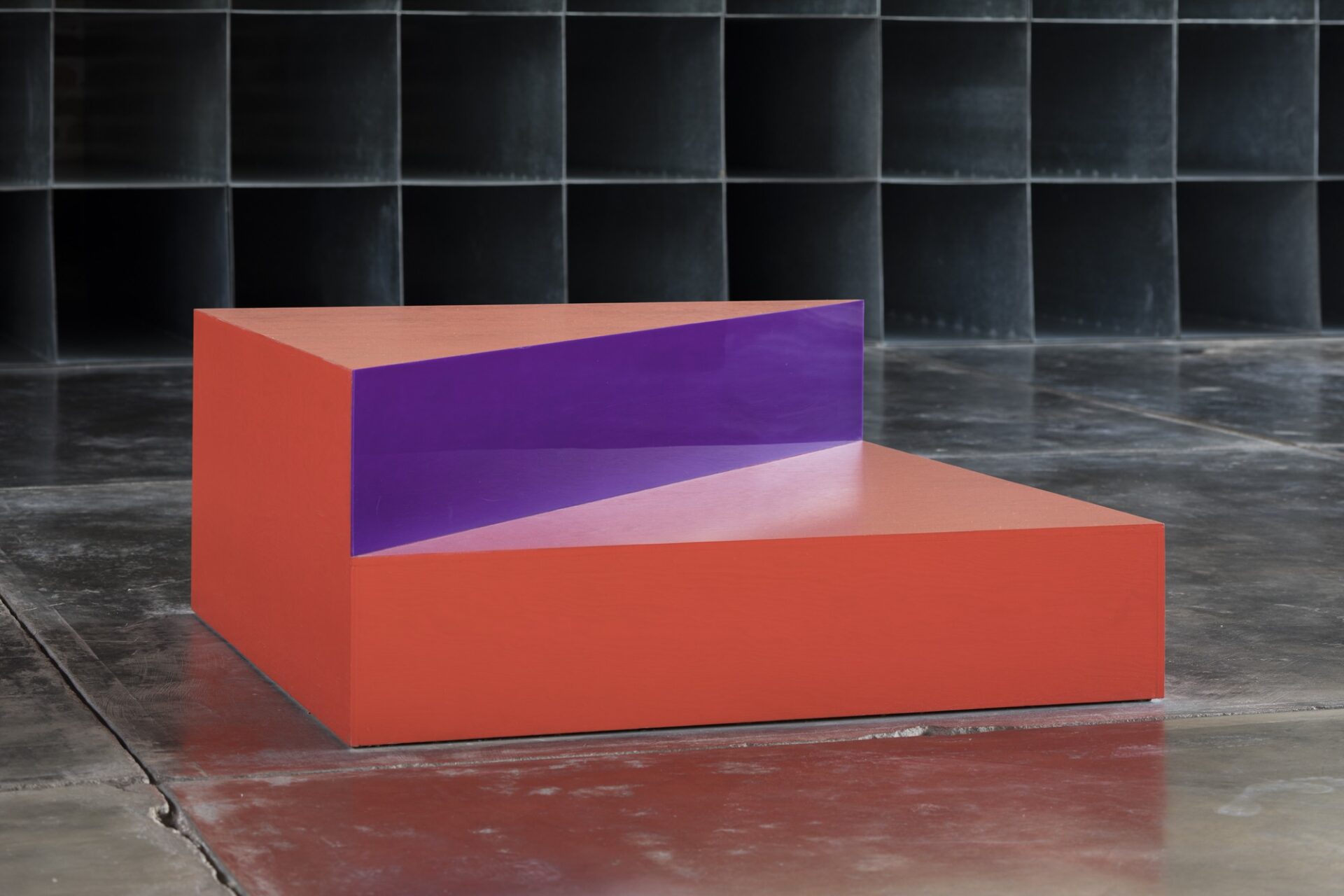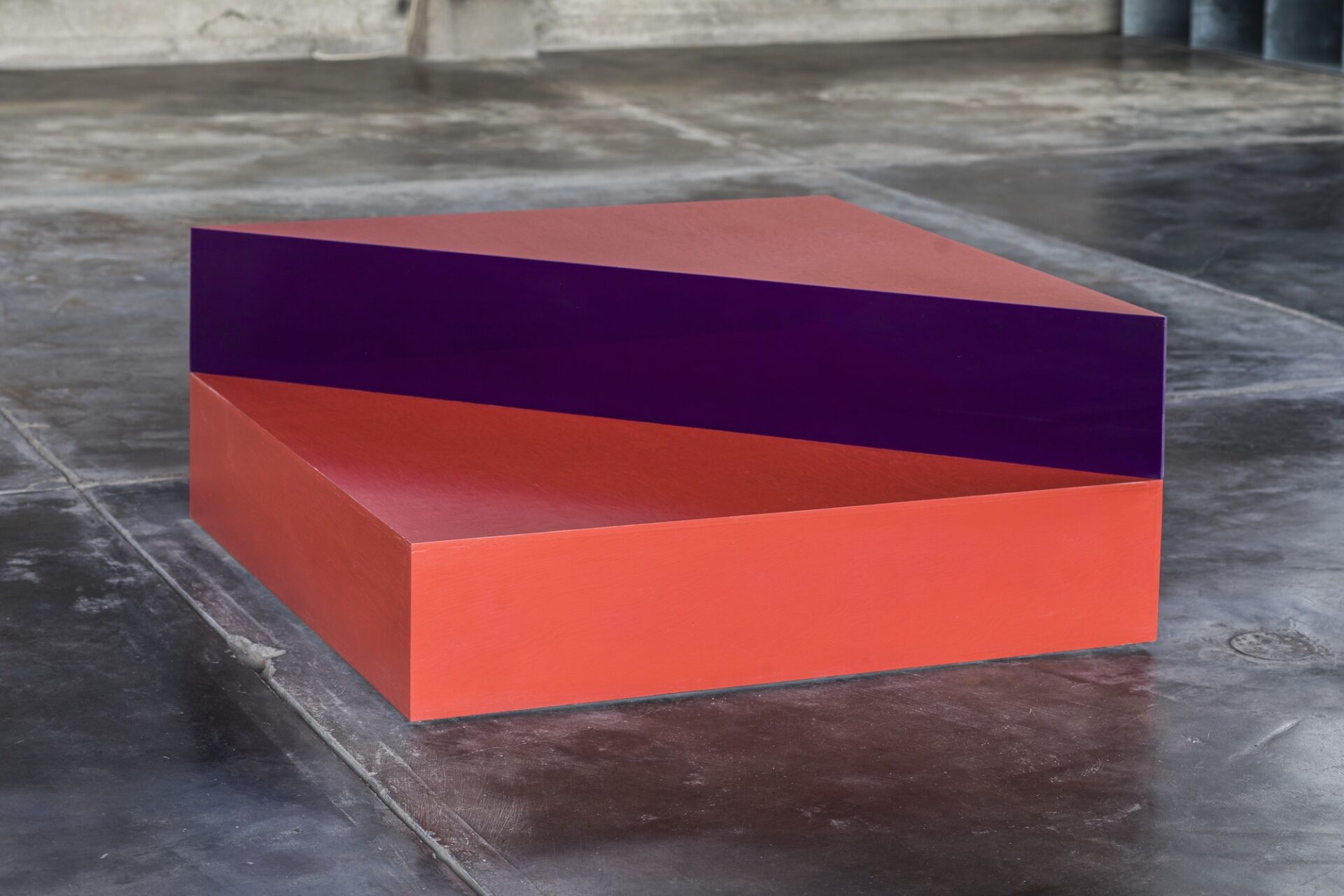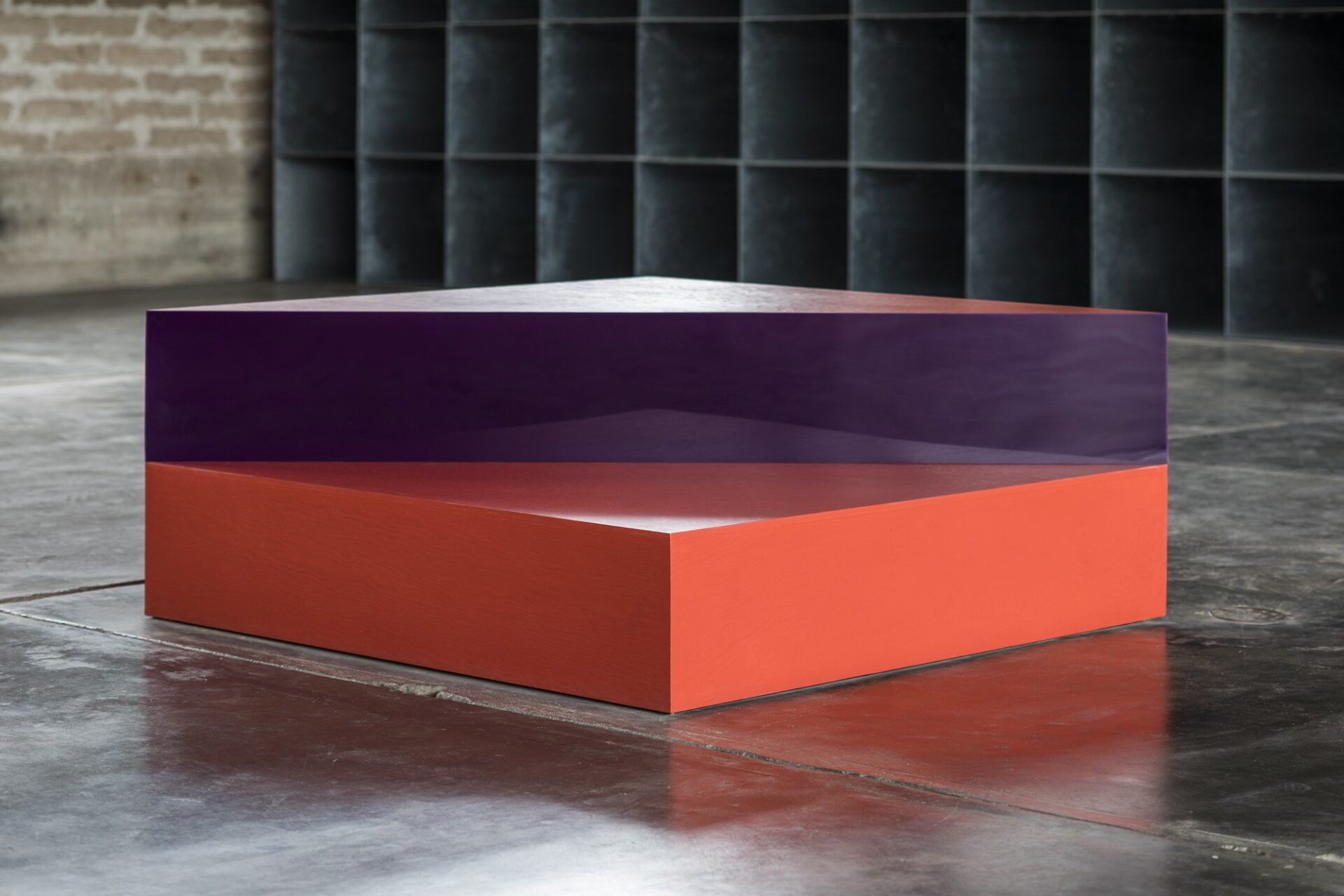This is the first work in three dimensions in which Donald Judd utilized plexiglass, a material that he would use consistently thereafter. Polymethyl methacrylate—sometimes referred to by various brand names, including Plexiglas and Perspex—was first commercialized in the 1930s and used in a variety of applications. Its utility for Judd was that “it has a hard, single surface and the color is embedded in the material”; “At the same time as I was interested in developing plain surfaces,” he said, “I was also interested in developing colors in a strong way.”1 Judd used cadmium red light in a number of works, beginning with his paintings in 1960, whereas purple (or violet), another color he would use frequently, was not incorporated until 1963.


